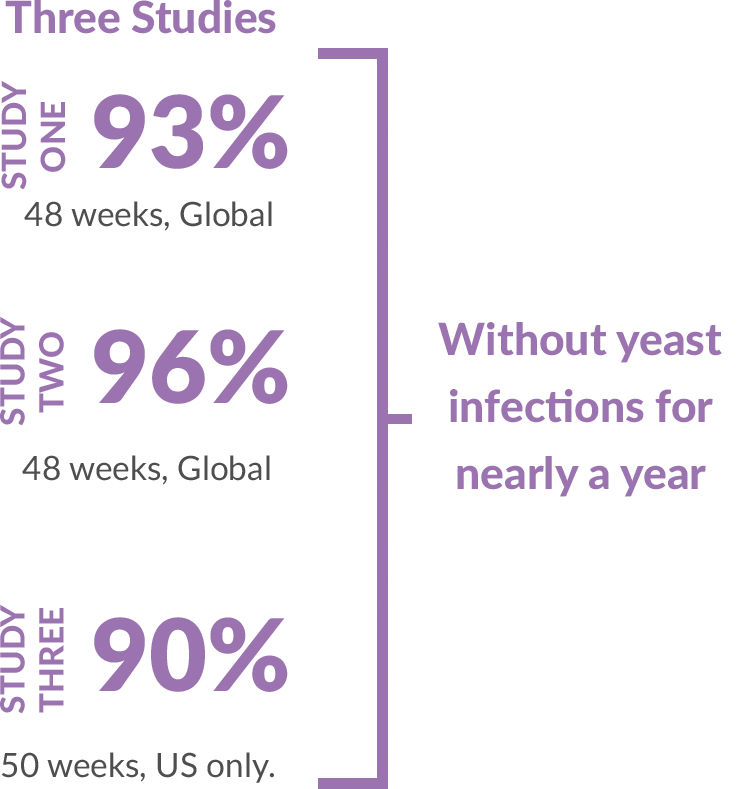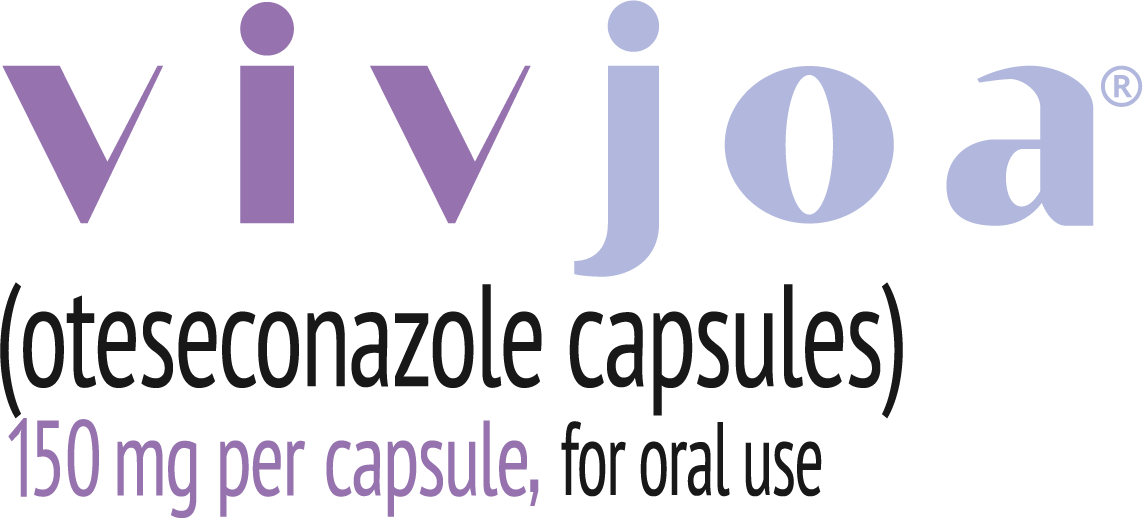VIVJOA is the first FDA-approved medication for recurrent vaginal yeast infections.
Welcome to Life Uninterrupted.
Welcome to VIVJOA.
Finally, the first FDA-approved medication for women living with chronic yeast infection known as recurrent vulvovaginal candidiasis (RVVC) who are postmenopausal or permanently infertile.1
Frustrated with Chronic Yeast Infections?
Just one 12-week course of oral therapy provides nearly a year without recurrent yeast infections.1

VIVJOA was safe and well-tolerated in all three studies.
The most frequently reported adverse reactions among patients who received VIVJOA included headache (7.4%) and nausea (3.6%).1
Recurrent Yeast Infection, also known as recurrent vulvovaginal candidiasis (RVVC), is a distinct condition2-4 from acute yeast infection and is defined as three or more symptomatic acute episodes of yeast infection in 12 months.5
What is VIVJOA?
VIVJOA® (oteseconazole) is a prescription medicine used to reduce the frequency of vaginal yeast infections that keep coming back (recurrent vulvovaginal candidiasis, RVVC) in females with a history of RVVC who are not pregnant and are not able to become pregnant.
It is not known if VIVJOA is safe and effective in females who have not had their first menstrual period.
IMPORTANT SAFETY INFORMATION
Do not take VIVJOA if you:
- Are able to become pregnant.
- Are pregnant or plan to become pregnant. VIVJOA may harm your unborn baby. Tell your doctor if you are pregnant, think you might be pregnant, or plan to become pregnant because of the risks to a fetus.
- Are breastfeeding or plan to breastfeed. It is not known if VIVJOA passes into your breastmilk which can pose risks to a breastfed infant.
- Are allergic to oteseconazole or any of the ingredients in VIVJOA.
Before you take VIVJOA, tell your doctor about all of your medical conditions, including if you have kidney or liver problems.
- Tell your doctor about all the medicines you take, including prescription and over-the-counter medicines, vitamins, and herbal supplements.
- Especially tell your doctor if you take medicines called breast cancer resistance protein (BCRP) transporter substrates, including the cholesterol lowering medicine rosuvastatin. Ask your doctor or pharmacist for a list of these medicines if you are not sure. Taking VIVJOA (a BCRP inhibitor) with BCRP transporter substrates may increase the risk of side effects with these medicines.
- Know the medicines you take. Keep a list of them to show your doctor and pharmacist when you get a new medicine.
How should I take VIVJOA?
- Take VIVJOA exactly as your doctor tells you to take it.
- Take VIVJOA capsules by mouth with food and swallow VIVJOA capsules whole.
- Do not chew, crush, dissolve, or open the capsules.
Side effects
- The most common side effects of VIVJOA are headache and nausea.
- These are not all the possible side effects of VIVJOA. For more information, ask your doctor or pharmacist.
Please see full Prescribing Information and Patient Information.
Call your healthcare provider for medical advice about side effects. You may report side effects related to VIVJOA by calling 1-855-299-0637. If you prefer to report these side effects to the FDA either visit www.FDA.gov/medwatch or call 1-800-FDA-1088.
REFERENCES: 1. VIVJOA (oteseconazole). Prescribing Information. Mycovia Pharmaceuticals, Inc.; 4/2022. 2. Jaeger M, Plantinga TS, Joosten LA, Kullberg BJ, Netea MG. Genetic basis for recurrent vulvo-vaginal candidiasis.Curr Infect Dis Rep. 2013;15(2):136-42. 3. Peters BM, Yano J, Noverr MC, Fidel PL Jr, et al. Candida vaginitis: when opportunism knocks, the host responds. PLoS Pathog. 2014;10(4):e1003965. 4. Sobel, JD. Recurrent vulvovaginal candidiasis. Am J Obstet Gynecol. 2016;214(1):15-21. 5. Workowski KA, Bachman LH, Chan PA, et al. Sexually transmitted infections treatment guidelines, 2021. MMWR Recomm Rep. 2021;70(4):1-187 6. Yano J, Sobel JD, Nyirjesy P, et al. Current patient perspectives of vulvovaginal candidiasis: incidence, symptoms, management and post-treatment outcomes.BMC Women’s Health. 2019;19(1):48
GREAT NEWS!
Your online visit is only $49 $29.
Is treatment right for you?
LETS GET STARTED.
By clicking here you will go to a third-party telemedicine provider.

